Related Research Articles

Alcalá de Henares is a Spanish city in the Community of Madrid. Straddling the Henares River, it is located 31 kilometres to the northeast of the center of Madrid. As of 2018, it has a population of 193,751, making it the region's third-most populated municipality.

The Complutense University of Madrid is a public research university located in Madrid. Founded in Alcalá in 1293, it is one of the oldest operating universities in the world, and one of Spain's most prestigious institutions of higher learning. It is located on a sprawling campus that occupies the entirety of the Ciudad Universitaria district of Madrid, with annexes in the district of Somosaguas in the neighboring city of Pozuelo de Alarcón. It is named after the ancient Roman settlement of Complutum, now an archeological site in Alcalá de Henares, just east of Madrid.
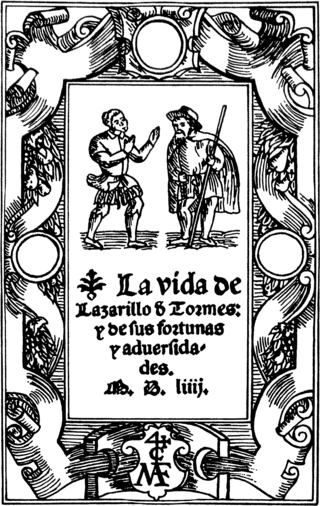
The Life of Lazarillo de Tormes and of His Fortunes and Adversities is a Spanish novella, published anonymously because of its anticlerical content. It was published simultaneously in three cities in 1554: Alcalá de Henares, Burgos and Antwerp. The Alcalá de Henares edition adds some episodes which were most likely written by a second author. It is most famous as the book establishing the style of the picaresque satirical novel.

John of Ávila was a Spanish priest, preacher, scholastic author, and religious mystic, who has been declared a saint and Doctor of the Church by the Catholic Church. He is called the "Apostle of Andalusia", for his extensive ministry in that region.
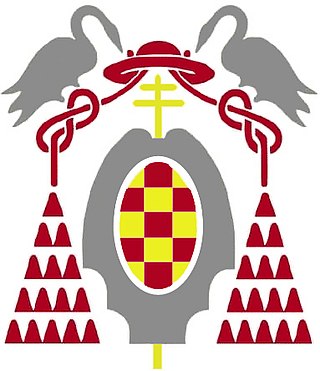
The University of Alcalá is a public university located in Alcalá de Henares, a city 35 km northeast of Madrid in Spain and also the third-largest city of the region. It was founded in 1293 as a Studium Generale for the public, and was refounded in 1977. The University of Alcalá is especially renowned in the Spanish-speaking world for its annual presentation of the highly prestigious Cervantes Prize. The university currently enrolls 28,336 students, 17,252 of whom are studying for undergraduate degrees, who are taught by a teaching staff of 2,608 professors, lecturers and researchers belonging to 24 departments. The administrative tasks are carried out by the university's Administration and Services, comprising approximately 800 people.

Irish Colleges is the collective name used for approximately 34 centres of education for Irish Catholic clergy and lay people opened on continental Europe in the 16th, 17th and 18th centuries.
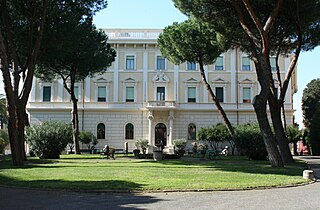
The Pontifical Irish College is a Catholic seminary in Rome for the training and education of priests. The college is located at #1, Via dei Santi Quattro, and serves as a residence for clerical students from all over the world. Designated a pontifical college in 1948, it is the last Irish College in continental Europe.

The Colegio Mayor de Santiago, el Zebedeo, Colegio del Arzobispo or Colegio Mayor de Fonseca is a historical edifice in Salamanca, Spain, founded in 1519 by Alonso de Fonseca, archbishop of Santiago de Compostela, in order to provide Galician students with a college in which to study within the University of Salamanca. It is one of the Colegios Mayores of Salamanca and was later known as the Colegio de los Irlandeses or the Irish College.
Patrick Curtis was an Irish prelate of the Roman Catholic Church. He served as the Archbishop of Armagh and Primate of All Ireland from 1819 to 1832.
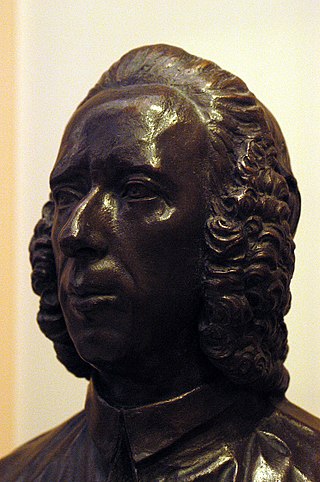
Alfonso Clemente de Arostegui y Cañavate was a Spanish bishop, writer, lawyer and diplomat.
Irish College at Lisbon or St Patrick's College, Lisbon was set up during the Penal Times, by a group of Irish Jesuits, supported by a number of Portuguese Nobles, in Lisbon.

The Irish College at Salamanca,, was endowed by the King of Spain and dedicated as the St Patrick's Royal College for Irish Noblemen. It was founded by Thomas White, formerly of Clonmel, Ireland, in 1592 to house the students of that country who came to Salamanca to escape the religious persecution of the Catholic Church in Ireland. The students resided at the college while attending lectures at the University of Salamanca.

Francisco de Robles was a bookseller in Madrid, whose shop was near the Puerta de Guadalajara. He was also a publisher; among his books are the first editions of Don Quixote (1605) and the Exemplary Novels (1613), by Miguel de Cervantes. Robles contracted with the printer Juan de la Cuesta to print Don Quijote in his shop at Atocha 87, in Madrid, which is today a museum and cultural center, and home of the Sociedad Cervantina.
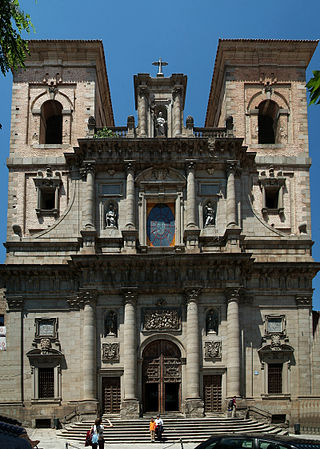
The Church of San Ildefonso is a Baroque style church located in the historic center of the city of Toledo, in Castile-La Mancha, Spain. It is also known as the Jesuit church and is consecrated to Saint Ildefonso of Toledo, patron of the city and Father of the Church.

The Russell Library is situated in Maynooth, County Kildare, in the Republic of Ireland on the campus of St Patrick's College, Maynooth. It houses the historical collections of St Patrick's College, which was established in 1795. The Russell Library is home to significant collections, manuscripts, and archival holdings, notably the Salamanca archive documents which date back to 1751. There is also a collection of incunabula such as a 1482 volume set on moveable type and an illuminated collection of medieval and Gaelic manuscripts. There are over 2,500 bibles, which include 493 long bibles. The Russell Library was the main library in Maynooth until the opening of the John Paul II Library in 1981 which is now the main library for both students of Maynooth University and St Patrick's College. Access to the Russell Library is by appointment only. However, during the summer the library holds exhibitions which are open to the public. The exhibitions typically last from the end of June to the end of July.

Paradores de Turismo de España S.M.E.S.A., branded as Paradores, is a Spanish state-owned chain of luxury hotels that are usually located in historic buildings or in nature areas with a special appeal. Its first parador was inaugurated on 9 October 1928 in Navarredonda de Gredos (Ávila). As of 2023, it operates ninety-seven paradores in Spain and one in Portugal, with 5,986 rooms in total. Every parador has its own restaurant offering the regional gastronomy of its area.
The Irish College of San Jorge at Alcalá de Henares, was founded about 1648, from the estate of Baron George Sylveira, a Portuguese nobleman related to the McDonnells of Ulster through his mother. After the baron died, his widow Beatriz Silveira implemented his wishes and the College came into existence. Alcalá de Henares is a town to the northeast of Madrid, where the Complutense University was situated. The college and its chapel were dedicated to St. George, and were formally known as the Royal Irish College of St. George the Martyr, Alcala. Students would study for seven years in Theology and Arts, and the college was affiliated to the Complutense University of Madrid, aimed at training clerics for Ireland, Belgium(Flanders) and The Netherlands. The Irish Franciscan Luke Wadding, O.F.M. wrote the statutes for the college.
The Irish College in Seville, was founded in 1612 by Theobald Stapleton, like many other Irish Colleges on continental Europe was to train priests to minister in Ireland, who could not be trained at home due to the Penal Laws. The college was dedicated to the Immaculate Conception, so the college was referred to as the Irish College of Immaculate Conception. Seville. In 1619 with King Philip III's support the Jesuit order assumed control of the college.

García de Medrano y Álvarez de los Ríos was the regent of Navarre, prosecutor, mayor and regent of Seville, Lord of San Gregorio, professor at the University of Salamanca, Knight of the Order of Santiago, a crime prosecutor of the Chancery of Valladolid, auditor of Valladolid, auditor of the Council of Finance and the Council of the Indies, Minister of the Treasury, Minister of the Indies, President of the Chamber of Magistrates in Seville, councillor of His Majesty's Council, prosecutor and councillor of the Council of Castile, Minister of Justice, Minister of Castile and of its Chamber, Councillor of the Inquisition and again Councillor of Castile until his death in 1683.

The Colegio Menor de San Ciriaco y Santa Paula, popularly known as Colegio de Málaga, is one of the educational centres that made up the former Cisnerian University of Alcalá de Henares, and which currently houses the Faculty of Philosophy and Letters of the University of Alcalá.
References
- ↑ Kerney Walsh, Micheline (1993). "The Irish College of Madrid". Seanchas Ardmhacha: Journal of the Armagh Diocesan Historical Society. 15 (2): 39–50.
- ↑ The History of the Irish College in Madrid By Enda Kenneally, Irish Slice of Madrid, July 8, 2020.
- ↑ Madrid Irish Colleges on the continent, New Advent, Catholic Encyclopedia.
- ↑ Salamanca Archive, Archives, St Patrick's College, Maynooth.